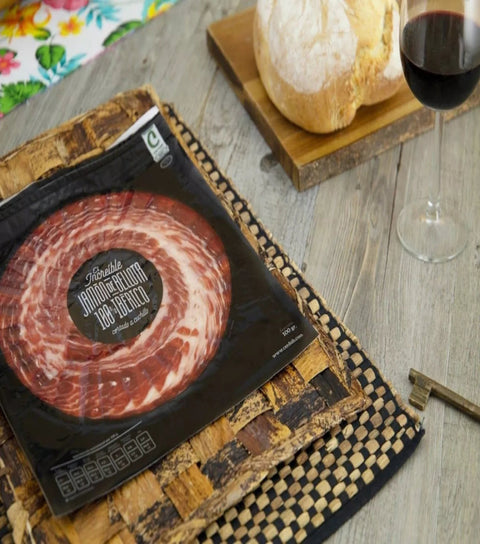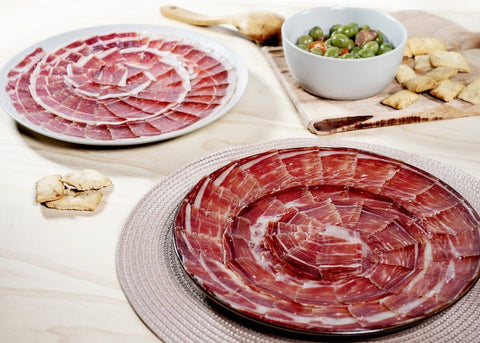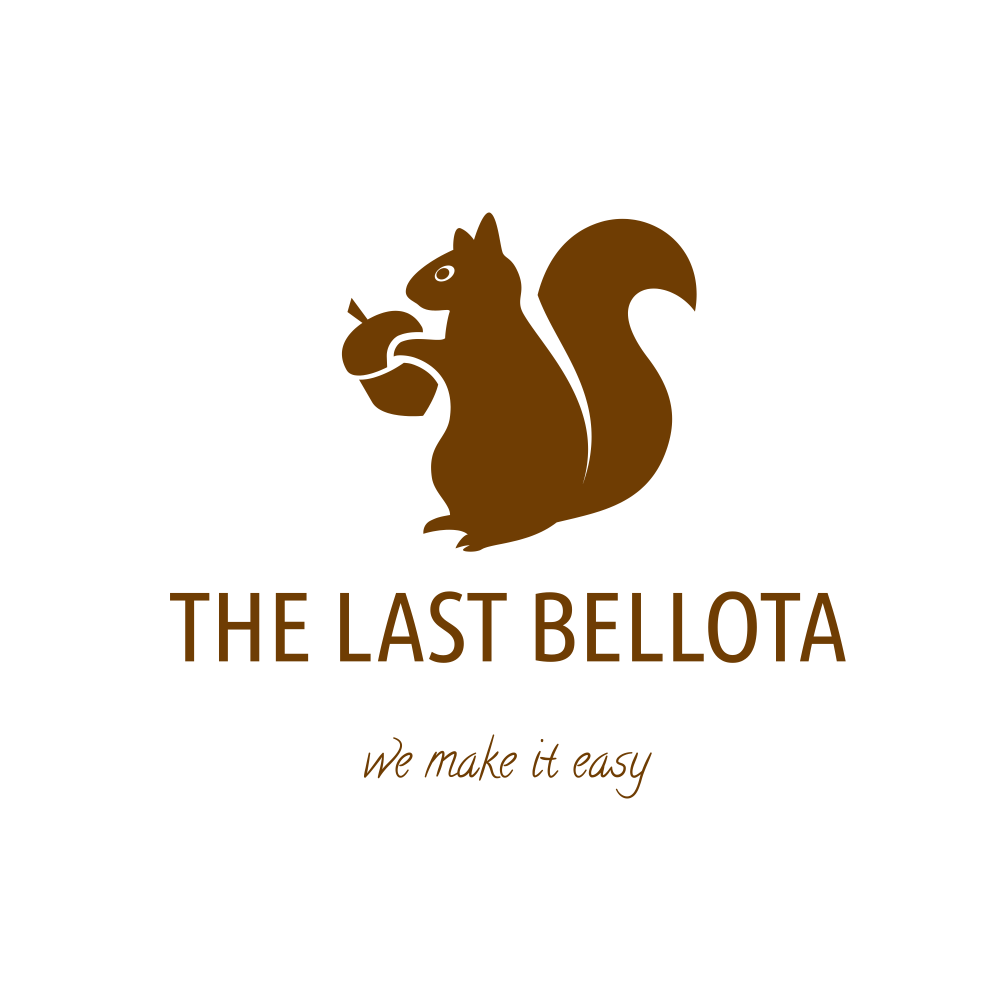

Bellota 100% Iberian Ham 100 gr.
Delivery in France 48H (EU 72H)
FREE shipping on purchases over €55
Secure payment
100 gram bag of hand-cut ham from a 100% Iberian Bellota pig from Salamanca. The authentic pata negra. We recommend opening the bag in advance to let it reach room temperature.
• 100% Iberian breed.
• Raised in the wild.
• Acorn-based diet.
100 gram bag
In the meadows of the Argañán field, in Salamanca, we dry the best acorn-fed Iberian ham, and so that you can enjoy it to the fullest, here you have this pack of 100g sachets. Knife cut.
In each envelope you will find a small, tasty sample of a work of more than 46 months of maturation.
To excite you with its flavor, it is presented knife-cut, which is the best way to appreciate all the nuances of an authentic black thigh.
Why buy a bellota ham instead of a serrano ham?
In Bellota ham, the infiltration of fat into the muscle, combined with a diet based on acorns and aromatic herbs and the exercise that the pigs perform in the wild in La Dehesa during the Montanera season, results in a very juicy meat, with an intense flavor, infinite nuances, and an unmistakable aroma. Serrano hams, on the other hand, have a milder, lighter flavor and their fat lacks the juicy texture of a slice of Iberian ham.
What are the differences between a pata negra, iberico, cebo, and cebo de campo ham?
An Iberian ham is a ham made from an Iberian pig. For it to be of the Iberian breed, the parents must also be Iberian pigs. Thus, there is 100% Iberian ham, 75% Iberian ham, and 50% Iberian ham. This breed of pig is a pig from the Iberian Peninsula (Spain and Portugal), whose meat quality and color make it stand out.
Now that we know what Iberian ham is, we can divide it into different categories:
Jamon de cebo : Iberian ham (minimum 50%), which has been fed on cereals and has lived mainly in closed facilities.
Jamon de cebo de campo : Iberian ham (minimum 50%) that has been fed on cereals and has lived mainly outdoors, in the open air.
Jamon de Bellota or pata negra : 100% Iberian ham , which has been fed on cereals, acorns and grasses. Lives in freedom.
There are also much longer maturation and curing times for Bellota Pata Negra ham than for cebo or cebo de campo ham. The price difference between Bellota para Negra ham and other hams (cebo de campo or cebo) is significant and even very high if we compare it with Serrano ham because of the feed and especially the curing and the life time of the pig. For Serrano we generally count less than a year of life, while for Bellota we are at more than 2 years.
And the difference between Jabugo, Guijuelo or Pedroches?
Jabugo, Guijuelo, Salamancha, or Pedroches are designated as appellations of origin. Indeed, there are many regions in Spain that produce excellent quality ham.
Jabugo ham is a ham produced in Jabugo, Huelva, a region of Andalusia in southern Spain. Hams such as Cinco Jotas are also found there.
Guijuelo ham is a ham produced in Guijuelo, in the Salamanca region. It includes hams such as Joselito.
Jamón de los Pedroches is a ham produced between Extremadura and Andalusia. It includes hams such as DR1855 (dehesas reunidas).
